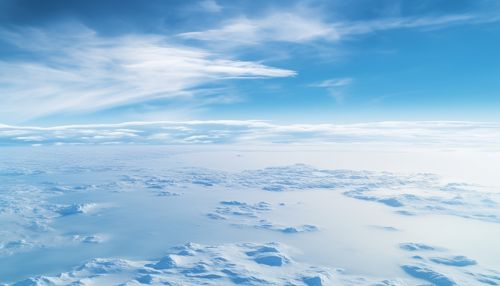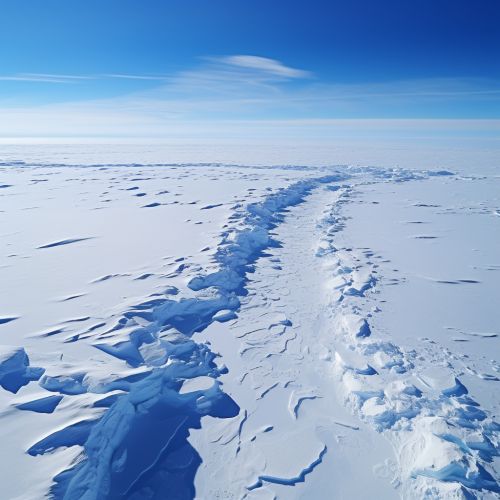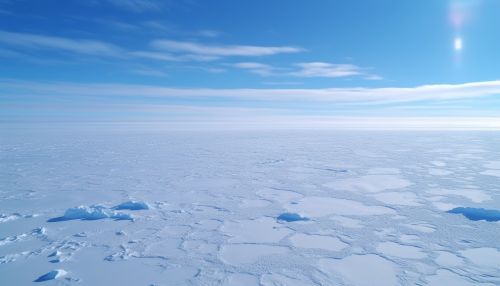Polar ice caps
Introduction
The polar ice caps are dome-shaped sheets of ice found in the polar regions, specifically the Arctic and Antarctica. They are composed of sea ice and ice shelves, and are a key component of the global climate system.


Formation and Structure
Polar ice caps are formed from snowfall that accumulates over thousands of years. This snow gradually compacts and turns into firn, an intermediate state between snow and glacier ice. Over time, the firn further compacts into ice, forming the ice cap.
The structure of the ice caps is layered, with each layer representing a year of snowfall. These layers can be studied to gain insights into climate conditions of the past, a field known as paleoclimatology.
Role in Climate Regulation
The polar ice caps play a crucial role in regulating the Earth's climate. They reflect sunlight back into space, a phenomenon known as the albedo effect, which helps to cool the planet. The ice caps also act as a heat sink, absorbing heat and helping to moderate global temperatures.


Impact of Climate Change
Climate change is having a profound impact on the polar ice caps. Rising global temperatures are causing the ice caps to melt at an unprecedented rate. This is leading to a rise in sea levels, which poses a threat to coastal communities around the world.
In addition to rising sea levels, the melting of the ice caps is disrupting ecosystems in the polar regions. Species that rely on the ice for hunting and breeding, such as the polar bear and the walrus, are facing habitat loss.
Conservation Efforts
Efforts are being made to slow the melting of the polar ice caps. These include reducing greenhouse gas emissions, promoting renewable energy, and implementing conservation measures in the polar regions. However, these efforts face significant challenges, including political resistance and economic considerations.
